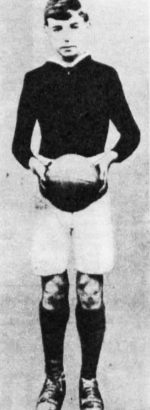TOUGH and TIRELESS – that’s World in Action
In only 10 months, World in Action has revolutionised television reportage


“THIS,” said a member of the World in Action team wryly, “is not a show to work for if you like to sleep regularly and are fond of your family.”
“It’s the way newspapers used to be in the old days,” chipped in Alex Valentine (ex-Fleet Street) without a trace of nostalgia.
“It’s a dictatorship,” boomed Tim Hewat, the 35 year old Australian dynamo who heads the team as executive producer. “It has to be to get the right results.”
Youngest of all television’s current affairs programmes (it began only last January), World in Action has brought a new style of television journalism into existence.


There are no link-men or pundits. Stories break down into three categories — profiles, inquiries and exposes. “Tough, tireless noseyness in the best traditions of good journalism,” The Spectator called it.
Behind the scenes, it is the tirelessness that distinguishes the whole operation. On a story about airlines the team travelled thousands of miles in two days, passed through 19 customs posts in 58 hours. Sleep? “We snatched it where we could.” said [Bill] Grundy. “On the plane, on an airport seat, sometimes even in taxis.”
Stephen Peet, after working for several weeks on his sensational film of East Germany, saw it edited and cut and prepared for transmission. Then he drifted into the office the following Monday for what he thought would be “a quiet day to enjoy my triumph. I should have known better — I didn’t get home until 3 a.m.”
Alex Valentine had to get up at dawn every day for a week in order to film petrol tankers filling up with supplies for his story on the cut-price petrol war.
Hewat and another member of the production team (there are six producers including Hewat, aided by three researchers) sat up all night editing and cutting and writing the commentary for the story on gambling.
When the Zermatt typhoid story broke last March, Tim Hewat decided it was too hot to ignore.
Two camera teams flew to Switzerland and by train to Zermatt and Davos. On the advice of the Public Health Laboratory, they made them selves self-supporting. (“They mustn’t eat or drink anything while there,” warned an official. “They mustn’t even brush their teeth.”)
The team disembarked from the mountain railway at Zermatt with 67 pieces of equipment, to be met by hostile officials who refused their co-operation.
So while Hewat argued, his chief cameraman, David Samuelson, crept away with a silent camera and shot 600ft. of film. But by the time he returned, Hewat had talked the officials round. By Friday night, Hewat and his men were back from Switzerland and the job of cutting and editing began.




